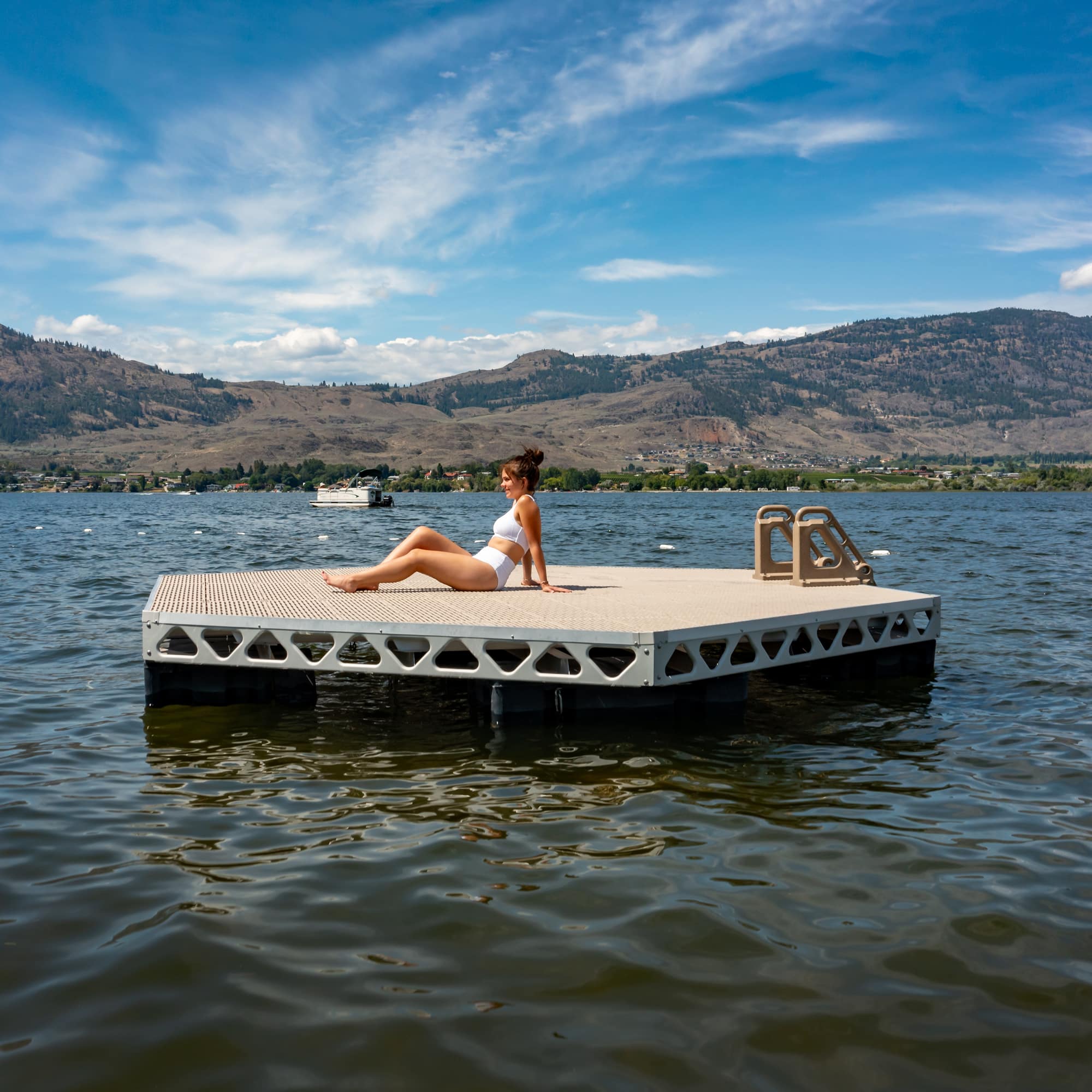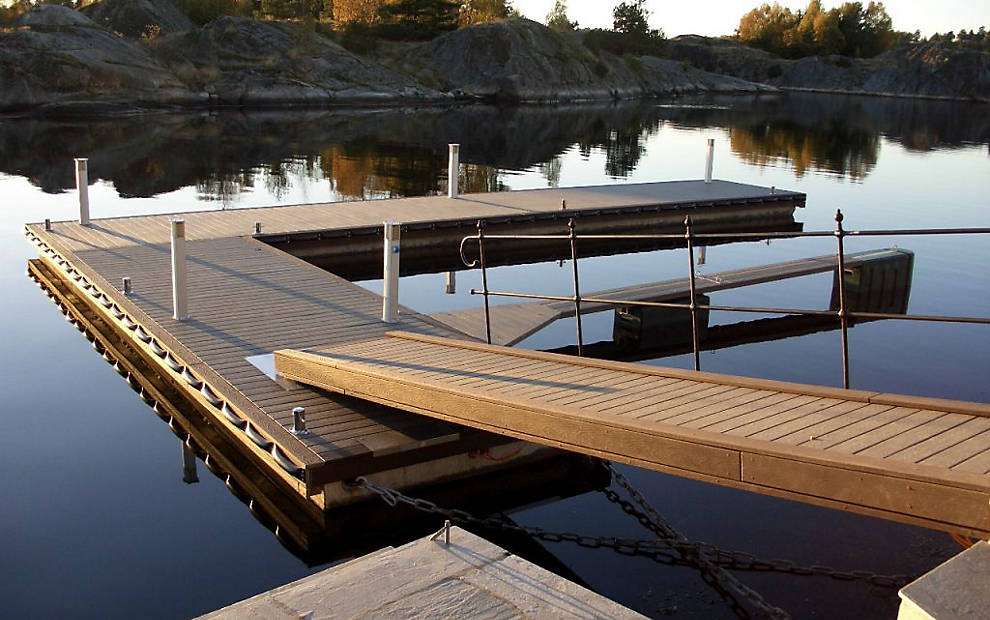Optimizing Your Outdoor Area with Specialized Floating Dock Services
Optimizing Your Outdoor Area with Specialized Floating Dock Services
Blog Article
Produce the Perfect Docking Solution With Floating Docks
Floating docks present a versatile remedy for a range of maritime needs, adjusting effortlessly to varying water degrees and diverse vessel kinds. As we check out the vital elements that add to the effectiveness of floating docks, a number of key variables relating to stability and maintenance will certainly emerge, elevating concerns concerning exactly how to maximize your docking experience.

Benefits of Floating Docks
Floating docks deal many advantages that make them a suitable option for different maritime applications. Unlike repaired docks, floating docks surge and autumn with the tide, ensuring regular access for vessels.
Furthermore, floating docks are normally much easier and quicker to set up compared to traditional set structures. Their modular design permits simple assembly and disassembly, facilitating upkeep and relocation when necessary. This adaptability is especially helpful for short-term applications or in atmospheres where conditions might change.
Floating docks likewise have a tendency to be more eco friendly, as they decrease interruption to the seabed and bordering water ecosystems. Their resilient nature reduces the danger of damages to marine life, advertising a healthier atmosphere. Furthermore, these docks can be personalized to accommodate numerous vessel sizes, making certain that they meet details operational demands - floating docks.
Inevitably, the combination of versatility, simplicity of installment, and environmental considerations makes floating docks a very reliable solution for a wide variety of maritime requirements.
Choosing the Right Materials
Choosing the ideal products for floating docks is essential to make sure stability, sturdiness, and longevity. The choice of materials directly impacts the dock's performance in various environmental conditions, consisting of direct exposure to water, sunshine, and possible wear from aquatic web traffic.
Usual products utilized for floating docks include aluminum, timber, and high-density polyethylene (HDPE) Light weight aluminum is light-weight, corrosion-resistant, and needs marginal maintenance, making it an exceptional option for durability. Its first price can be greater compared to other products.
Timber, while visually appealing and providing a traditional appearance, can be at risk to rot and bug damage if not properly dealt with. As a result, using pressure-treated wood or normally long lasting species like cedar or redwood can mitigate these problems.
HDPE is a prominent choice as a result of its resistance to UV rays and chemicals, together with being environmentally pleasant. floating dock builder. It is light-weight and offered in various shades, permitting modification
Eventually, the ideal material selection will depend upon specific demands, including budget plan, wanted appearances, and environmental factors to consider. Careful analysis of these factors will certainly bring about a resilient and effective floating dock service.
Layout Considerations for Stability
When designing floating docks, making sure security is a fundamental aspect that can considerably impact their capability and safety and security. Security in floating dock layout is affected view it by numerous aspects, consisting of buoyancy, weight circulation, and the setup of parts.
Weight circulation is crucial; evenly distributing loads across the dock prevents turning and boosts security. This can be attained with calculated positioning of docking devices, such as cleats and fenders, as well as proper spacing of floats. In addition, the measurements of the dock should be attentively intended. Broader styles can provide enhanced stability, specifically in harsh water conditions, while longer docks might need extra supports to avoid drooping.
An additional vital factor to consider is the ecological impact, including wave action and wind. Incorporating attributes such as sidewalls or skirting can assist mitigate the impacts of environmental pressures, preserving security in unfavorable problems. Eventually, a mix of thoughtful style, product choice, and understanding of ecological elements will certainly yield a drifting dock that meets both security and safety demands.
Installation Tips and Strategies

Following, safeguard the needed licenses and adhere to local policies, which may determine setup methods and environmental considerations. Involve a qualified service provider experienced in floating dock installments if needed. Usage high-quality products created for marine environments to boost longevity and longevity.
When positioning the dock, straighten it alongside the official site shoreline to help with easy accessibility. Make certain that the anchoring system is robust, employing cinder block or helical supports to maintain the dock against wind and wave action. It's critical to represent seasonal water level variations, including possible ice movement in colder environments.
During the installation, verify the dock's floatation and stability prior to completing the anchoring. Frequently inspect the setup for any indications of wear or damage. By complying with these techniques and tips, you can accomplish a secure, practical, and cosmetically pleasing floating dock installment that meets your requirements.
Maintenance and Care Standards
Caring and maintaining for floating docks is vital to extending their lifespan and making certain risk-free use. Normal evaluations need to be conducted to identify any indications of wear, damage, or marine development. Try to find splits, loosened installations, or discolored locations on the dock's surface, as these issues can compromise structural integrity.
Cleaning is vital. Utilize a stress washer to eliminate algae, barnacles, and debris, which can build up in time. For stubborn growth, consider environmentally friendly cleaner that will not hurt water life.
Additionally, examine the mooring lines and supports often to ensure they are protected and totally free from corrosion. Change any kind of frayed or damaged lines promptly to keep security.
During extreme climate, such as tornados or freezing problems, take precautionary measures. Safeguard the dock with added mooring lines and, if practical, eliminate any removable elements to avoid damage.
Verdict
In verdict, the implementation of floating docks presents a efficient and flexible docking solution suitable for different maritime applications. With correct installation and routine upkeep, floating docks can offer reliable and reliable docking experiences for a broad variety of vessels.
As we discover the important advice aspects that add to the performance of floating docks, a number of crucial variables regarding stability and maintenance will arise, elevating inquiries about how to enhance your docking experience. Unlike taken care of docks, floating docks rise and fall with the tide, making certain consistent ease of access for vessels.When making floating docks, ensuring security is an essential aspect that can significantly affect their capability and safety. Security in floating dock layout is affected by various elements, including buoyancy, weight distribution, and the arrangement of elements. Eventually, a combination of thoughtful layout, material choice, and understanding of ecological aspects will produce a floating dock that satisfies both stability and safety and security requirements.
Report this page